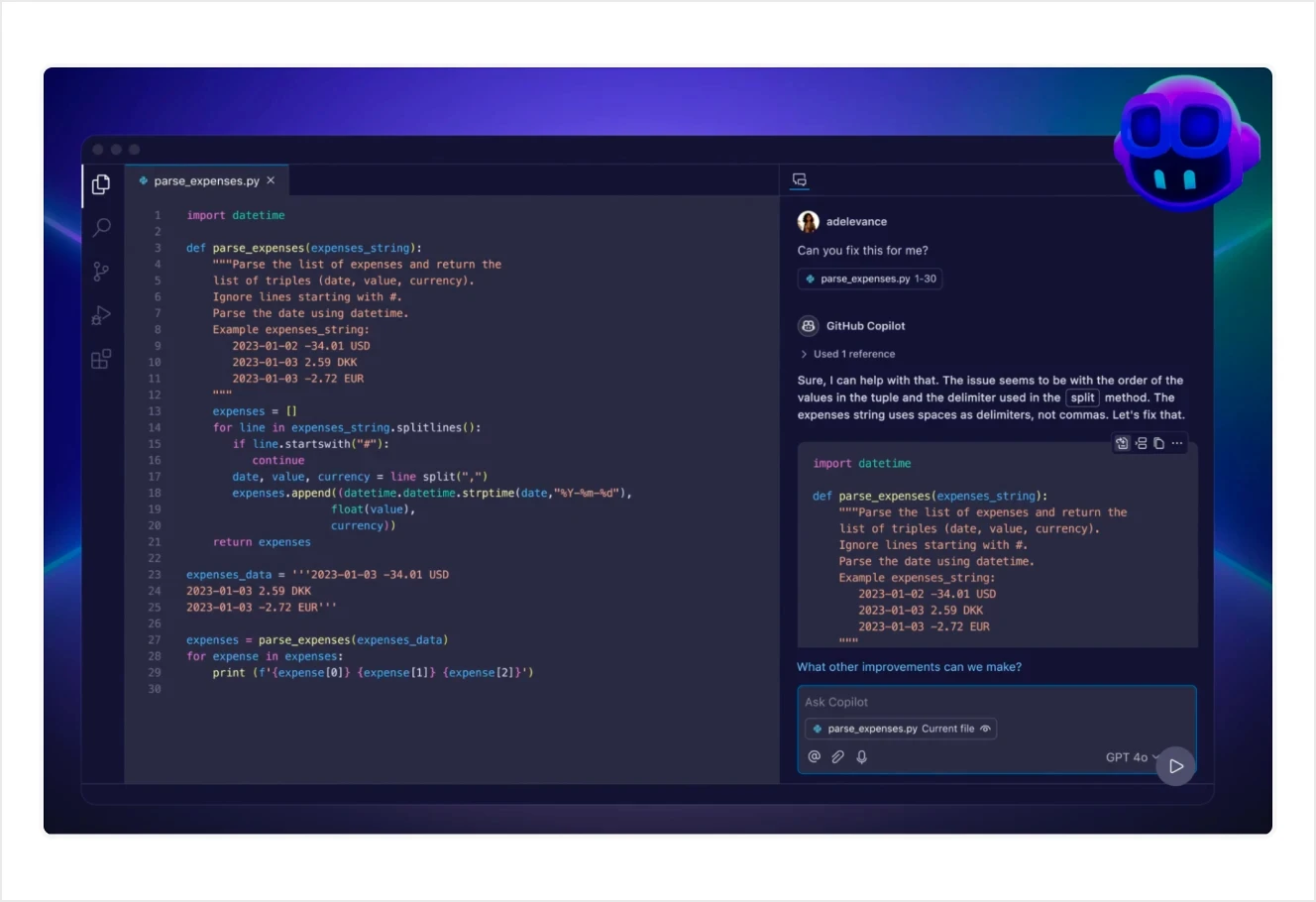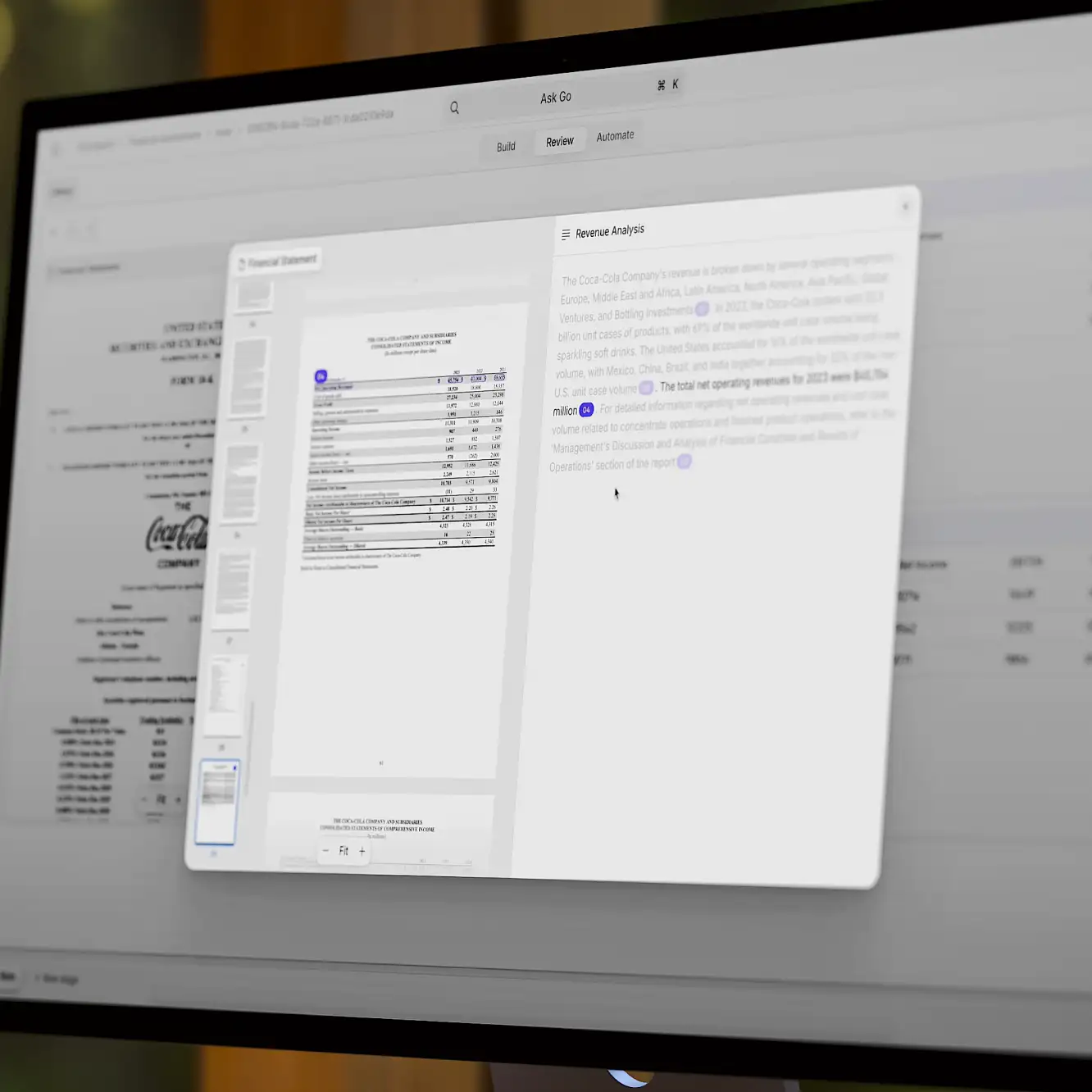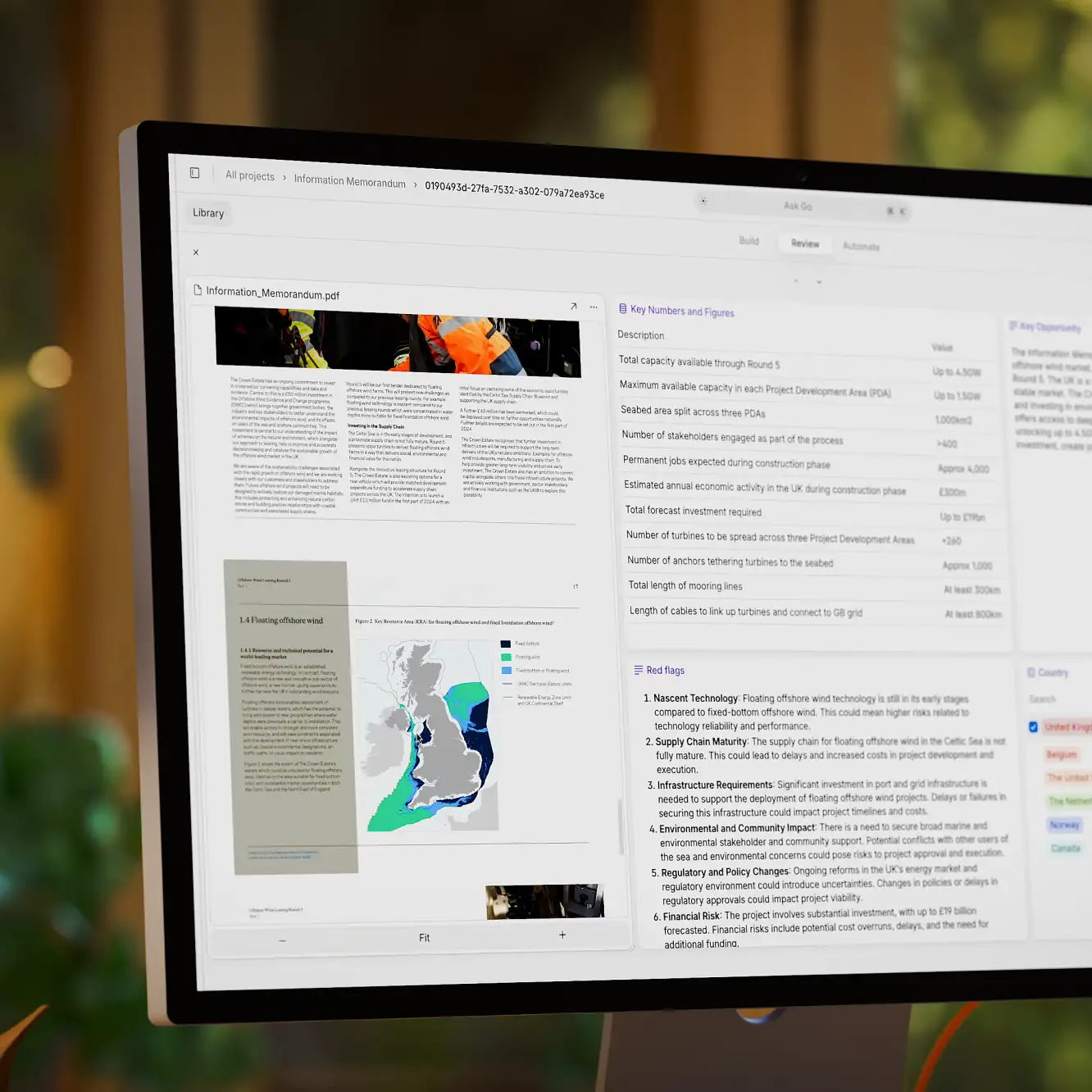LLMs
16 min read
—
Mar 6, 2025

Content Creator
What Are AI Agents and How to Use Them in 2025?
ChatGPT is the ultimate consensus machine. Ask it to name the most important alternative rock bands in the history of popular music, and it will unmistakably say Nirvana, Radiohead, R.E.M., and so on. But ask it what AI agents are, and it will struggle. Ironically, it misses the subtlety of itself being a kind of semi-agentic AI. Instead, it defaults to a textbook definition, something you might find alongside Asimov's three laws of robotics or academic AI concepts from the field's early days:
An AI agent is an autonomous system that perceives its environment through sensors, processes information, and takes actions to achieve specific goals.
Sure, the "official" definition is fine but it's highly conceptual and theoretical. To be honest, it sounds like some sort of an autonomous AI robot—especially the "sensors" part.
Now, if you tell ChatGPT to find more recent sources and explain what AI agents are in modern business contexts... it is going to totally mix things up. It will try to use web search and confuse AI agents with customer service “agents” powered by AI. Well, I guess some AI agents can indeed be virtual customer service assistants, but the name is just coincidental. The "agency" of AI agents can be much broader.
ChatGPT is pretty terrible at understanding something new that lacks a settled definition. If there's no consensus yet, ChatGPT won't help you.
So, what is the "real" meaning behind the term AI agents, that has become a buzzword recently?
Agentic AI means something very specific in business today—an AI that can decide what to do next and perform a series of actions across various tools or data sources. Think AI assistants that can not only answer your questions but also perform actions on your behalf.
In this article:
What AI agents are and how they differ from other types of AI
Examples of agentic AI used in real-life situations and business cases
How to set up your own AI agent and connect it to third-party tools
Best practices and key considerations
Understanding AI Agents
Let's be honest,“AI agent” is a problematic term. Although the definition mentioned earlier sounds neat and tidy, how does it actually work in practice?
Take Amazon’s Alexa, for instance. Is it an AI agent because it can determine whether you want a weather report versus playing a song based on your request? Or is that too limited to qualify as “agency”? This leads us to an even more fundamental question: what do we really mean by “agency” and "autonomy" in AI? Should an AI agent be able to survive being randomly dropped in Los Angeles to find clothes and weapons like the Model 101 Terminator?
Here is a useful definition that is closer to what most engineers now mean when they mention AI agents:
At LangChain, we define an agent as a system that uses an LLM to decide the control flow of an application. Just like the levels of autonomy for autonomous vehicles, there is also a spectrum of agentic capabilities.
When business leaders and developers talk about "AI agents" and "agentic AI" today, they're usually referring to something very specific and practical: software that uses large language models (LLMs) to reason and perform a series of actions involving different tools, data sources, or functionalities.

In the simplest terms, if we move beyond all the negative connotations usually associated with the term “bot,” AI agents are advanced bots powered by LLMs. Since they can generate their own prompts for next steps or write custom code for various APIs, they function as “autonomous” agents. The level of this autonomy is still very limited. The likelihood of success on a given task may have an inverse relationship with task complexity.
This might sound basic, but consider this—ChatGPT's "think before you answer" function that adds multiple reasoning steps was only introduced a few months ago. That's how new some of these capabilities are.
The current state of AI deployment and implementation, especially in business contexts, is still primarily limited to one-off interactions when using OpenAI's API directly. The typical pattern is simple: input a single prompt, get back a response from a selected GPT model. Rinse and repeat. True AI agency—the ability to maintain context while solving a complex, multi-step problem using tools—remains a frontier we're just beginning to explore.
This gap between the theoretical definition of AI agents and their practical implementation in business is why the term creates so much confusion. We're not talking about robots with sensors or sci-fi level artificial intelligence here. It isn’t about mimicking human-like autonomy. Instead, we're talking about software that can:
Break down complex tasks into logical steps
Choose appropriate tools or data sources for each step
Execute those steps while maintaining context
Return the results back to users
Using terms like "assistant," "agent," or "chatbot" sets certain expectations for our interactions with these systems. We often anthropomorphize them, treating them as entities with human-like qualities. For example, even highly specialized AI assistants for coding—such as GitHub’s Copilot—use a “cute” robot with huge eyes as part of their visual branding. Agents are supposed to be helpful and friendly.

However, not all AI agents need a conversational facade. While sending messages and writing prompts remains a part of the experience, the best apps for building AI agents often use spreadsheet-like or workflow design elements in their UI. They are more like flowcharts that let you set specific steps, conditions, and scenarios. This design allows the AI to make choices and deliver unique results for each query while following defined steps. For example, when you instruct, "Transcribe this audio file," you expect the system to use a specific voice-to-text conversion model rather than a random one.
This structured approach is key to AI safety and auditability. It provides a complete audit trail of every action the AI agent takes, so you can verify that it’s working exactly as intended and adhering to your internal guidelines and compliance requirements. You gain complete visibility into every step and output, which is essential for understanding how the agent reaches its conclusions.
Moreover, an intuitive, user-friendly interface enables you to quickly iterate and modify your workflows. This agility means your AI agents remain continually useful and aligned with your evolving business needs. The chat interface in many cases is ultimately just a more intuitive way to interact with projects and workflows, which are the backbone for building AI agents.
In enterprise and business contexts, AI agents are viewed more as automated systems with some self-prompting and limited autonomy. Platforms like V7 Go, Make, or Clay illustrate this approach by integrating both conversational elements and structured workflows.
Take a look at the illustration below:

On the top, the CRM automation agent in V7 Go is activated through a chat interface and then returns the results. On the bottom, a different automation tracks the steps and reasoning behind an AI writing assistant’s actions for bulk actions. For example, the AI has selected several persuasive writing techniques to use when composing parts of an article. In this case a spreadsheet-like view is easier to use. The AI agent also determines whether extra online research—such as finding expert quotes—is needed. Based on this, the AI can decide to perform any additional actions.
What Are the Benefits of AI Agents
Recent data from LangChain's survey of 1,300 professionals shows three main ways companies are getting real value from AI agents, even if the technology isn't perfect yet:
Research and data extraction is where AI agents are proving most useful, with 58% of companies using them to handle information-heavy tasks. Unlike regular search tools, these agents can pull information from different sources, break down complex topics, and create organized summaries. What makes them different is they can work through multiple steps—like starting with a broad search, spotting important themes, and then digging deeper into specific areas based on what they find.

Personal productivity is the second most common use, with about 53% of surveyed companies trying it out. These agents help streamline everyday work by connecting different tools and handling repetitive tasks. Take scheduling meetings as an example—an agent can check calendars, suggest times, send invites, and even draft basic agendas. While it's not perfect, it cuts down on the time-consuming back-and-forth that fills up people's days.
Customer service is the third main area, with 46% of companies testing AI agent-based support. Unlike basic rule-based chatbots that just follow scripts, these agents can understand context and work through multiple steps to solve problems. They gather initial details, check help documents, and either fix simple issues or send complex ones to the right human expert with all the background information ready.
But here's the reality check—AI agents still need careful watching and often make mistakes. Most companies find they need strict guidelines and human oversight to keep their agents working properly. While the technology shows promise, we're only seeing real benefits in specific, controlled situations, not the kind of broad independence that many people initially hoped for.
How AI Agents Work: Examples
We've already established that AI agents can take a single prompt as input and determine a complete multi-step process with subtasks. But what does that look like in practice? Can ChatGPT do it out of the box? Is ChatGPT an AI agent at all?
ChatGPT typically operates on a single prompt-response system. While features like chain-of-thought reasoning might resemble agentic AI—where the AI takes multiple steps or actions—ChatGPT doesn't orchestrate external tasks or tools as an agentic AI would. It's primarily designed for generating responses to prompts.Additionally, LLM-based chat products like ChatGPT do have context windows during conversation, but the windows are limited and not necessarily oriented toward a specific goal. The most "agentic" features available in ChatGPT right now are its AI web search functionality and the ability to upload custom documents, but these are still quite limited compared to truly agentic AI frameworks like V7 Go.
This quote from Ece Kamar, director of Microsoft’s AI Frontiers Lab, nails down the problem and suggests a great solution too:
Imagine you have a difficult problem to solve that an LLM cannot do alone. If I can have an agent—we call it an orchestrator—that’s kind of the reasoner agent, the problem-solver agent that can take that [problem] and divide it into steps, and then identify which existing agent has the right capabilities to do that part of the task and delegate and bring the pieces together, that turns out to be a really useful way of doing more with these agents.
Now, let’s see this exact approach in action. Here is an example of agentic AI for data extraction from complex documents.

We start with a general request, and the AI suggests available pre-designed agents.
Then, we can pick a file from our knowledge hub or upload it directly via the chat interface.
After extracting all relevant information, the AI agent will pre-process it and perform an analysis. What happens behind the scenes is adding a new row to a spreadsheet-like workflow. After processing the information column by column and calculating each step, the agent comes up with the final triage result.

All of the insights are linked to specific sections of the document. You can navigate back to the original information source to verify its accuracy.

Now, you might be wondering where the agentic part comes in. In fact, returning this information to us was the final step of a multi-step process. Here is another view that allows us to take a closer look at what happens under the hood:

This AI workflow uses multiple generative AI models combined with specialized prompts, as well as additional scripts and tools like Python code and OCR. Notice how different parts of the analysis occur in sequence, with new information being used as inputs to the next model or tool—all of them chained together using logic. On top of that, all of this information can be processed in a structured format such as JSON, referenced, or used by other AI agents.
So, how do you build something like that?
One of the best parts is that, in some cases, you don't have to—it's agentic and can sometimes design itself. In other cases, you may want to use a pre-configured agent template and tweak it to your liking. Let’s discuss specific solutions and frameworks for using AI agents.
Best Agentic AI Software
When it comes to implementing AI agents in your business or workflow, you have several options ranging from no-code platforms to developer-focused frameworks. The right choice depends on your technical expertise, specific use case, and how much customization you need.
The agentic AI landscape can be broadly divided into two categories. On one hand, no-code platforms offer intuitive interfaces where you can build and deploy AI agents with minimal technical knowledge. These solutions typically provide pre-built templates, drag-and-drop workflow builders, and visual interfaces for connecting different tools and data sources. They're ideal for business users who need quick implementation without dedicated development resources.
For organizations that need deeper customization or have specific technical requirements, developer-focused frameworks offer more flexibility and control. These code-first approaches require programming knowledge but enable more sophisticated agent behaviors, custom integrations, and specialized workflows.
Let's explore some of the leading platforms in both categories, each offering unique approaches to implementing agentic AI in real-world business scenarios.
V7 Go: AI Agents for Data Extraction & Analysis

V7 Go is a knowledge work automation platform that puts agentic AI at the center of complex document processing. It can also be used for data enrichment, AI-powered web search, and other scenarios where a large amount of unstructured information needs to be analyzed and researched within a domain-specific context. V7 Go lets you both create custom AI agents and access a growing library of pre-built agents designed for specific business needs, use cases, and document types.
V7 Go’s agents can process everything from financial statements and legal contracts to audio files and technical manuals. For example, a financial reporting agent can extract key metrics from quarterly reports, analyze trends across multiple documents, and present the findings in a structured format—all without manual data entry.
For companies drowning in paperwork, V7 Go offers a practical entry point into agentic AI without requiring deep technical expertise. Users can start with pre-built agents for common document types and gradually customize them for specific workflows. This balance of accessibility and power has made it particularly popular in industries like finance, legal, and healthcare, where document processing has traditionally been both time-consuming and error-prone.
Explore use cases:
CrewAI: Agents for Collaborative Task Automation

CrewAI is an advanced platform built to orchestrate teams of specialized AI agents that work together much like a human team tackling a complex project. Rather than relying solely on static workflows, CrewAI emphasizes role-based collaboration, where each agent is assigned a specific role, goal, and backstory. This design enables agents to autonomously delegate tasks among themselves, coordinate their efforts, and collectively solve multifaceted problems—whether that means generating content, performing market analysis, or handling customer inquiries.
At its core, CrewAI transforms the traditional approach to task automation by simulating a dynamic, interactive team. Agents in CrewAI can communicate, share context, and adapt their strategies based on evolving inputs. This level of inter-agent collaboration makes the framework ideal for projects that demand a nuanced, multi-step process, where one agent’s output becomes another’s input in a fluid, interconnected chain.
The platform supports both sequential and hierarchical processes, ensuring that even the most complex projects are broken down into manageable subtasks. In doing so, CrewAI not only automates routine activities but also fosters emergent problem-solving through collective intelligence.
LangChain: Agentic AI Framework for Developers

LangChain is a powerful open-source library that empowers developers to build intelligent AI agents with rich context management and dynamic decision-making capabilities. Unlike no-code platforms that let you deploy pre-built agents with minimal technical effort, LangChain offers a deep, code-first approach that allows for precise control and customization over every aspect of an agent’s behavior.
With LangChain, you can craft sophisticated workflows where an AI agent reasons through multi-step tasks—retrieving information, maintaining conversational context, and interacting with external tools or APIs as needed. This framework transforms large language models into context-aware systems that can break down complex problems, chain multiple actions together, and adapt their responses dynamically.
For developers, LangChain is the go-to toolkit for building production-grade, intelligent AI applications that require detailed customization and fine-grained control over the entire decision process. Its modular architecture, robust memory handling, and extensive integration capabilities make it a unique solution for creating AI agents that are both powerful and adaptable.
AutoGen v0.4: Exploring the Bleeding Edge of Agentic AI

AutoGen v0.4 by Microsoft is part of an ongoing research initiative aimed at understanding and overcoming the challenges of building truly autonomous AI systems. Unlike more mature solutions that already handle multi-step tasks, AutoGen is a research prototype that experiments with asynchronous, event-driven architectures to enable dynamic coordination among AI agents.
What sets AutoGen apart is its focus on scalability and efficient handling of parallel agent interactions. It provides a modular framework that allows developers to experiment with how agents can maintain context and adapt to evolving information over longer sequences of interactions. However, Microsoft itself positions AutoGen as an exploration into the potential of agentic AI—acknowledging that the kind of robust, fully autonomous agents many envision remain a goal for future iterations.
Choosing the Right AI Agent Platform
Before selecting a specific platform or framework, consider several important factors. Evaluate the integration capabilities to ensure it connects with your existing tools and systems. Look at customization options to determine if you can tailor agents to your specific business processes. Consider scalability to confirm it will handle your expected volume of tasks and interactions. Assess the monitoring and oversight features to verify you can track agent performance and intervene when needed. Finally, examine security and compliance measures to understand how it handles sensitive data and meets regulatory requirements.
The Future of AI Agents
As we look toward the future of agentic AI, several emerging trends are likely to shape the landscape.
Enhanced Autonomy and Decision-Making
While today's agents operate within relatively constrained parameters, future iterations will likely demonstrate greater autonomy and reasoning capabilities. This doesn't mean human-like general intelligence, but rather more sophisticated decision-making within their domains of expertise.
Collaborative Multi-Agent Systems
The next generation of AI systems will likely feature multiple specialized agents working together to solve complex problems—similar to how teams of humans with different skills collaborate. This approach combines the benefits of specialized expertise with the power of coordinated effort.
Seamless Integration into Business Operations
AI agents will increasingly fade into the background of business operations, working continuously to optimize processes, identify opportunities, and solve problems without explicit invocation. This transition from "tools we use" to "systems that work alongside us" represents a significant shift in how we think about workplace technology.
AI agents represent a significant evolution beyond traditional automation and generative AI. By combining the reasoning capabilities of large language models with the ability to interact with tools and systems, they offer a new approach to handling complex business processes.
While still emerging, the technology has already demonstrated measurable benefits across industries—from more efficient document processing to enhanced customer experiences. Organizations that approach implementation with clear objectives, appropriate governance, and a commitment to continuous improvement are seeing the strongest results.
If you're interested in implementing AI agents in your organization, tell us more about your idea, and let's discuss possible solutions. We usually build a proof of concept within days.












